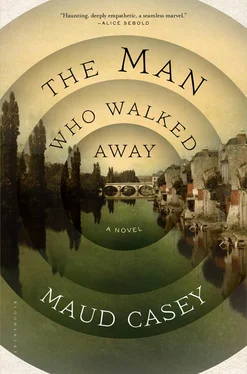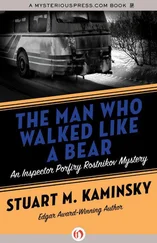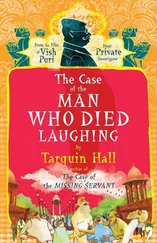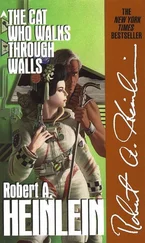What will the world teach you that you cannot learn at home?
“More,” said the prince with one swan wing.
“More?” the king said. He was a generous man who wanted nothing more than the happiness of his boy. “If you want to see the world, you should see the world.”
Albert’s legs are strong and solid and his heart brims with the world. He will walk out into the hills and dales, and more hills and more dales. He will stuff his shoes with soft blue moss; he will eat berries; he will befriend the squirrels, who will share their nuts with him; he will find trees for shelter and secret animal dens.
Night had not yet sucked the shape out of the earth when, his heart poised for more , he set out. He followed his father’s voice into the courtyard, into the winding streets, and through the ancient gate of the city. Walking over hill, over dale, the prince’s feet were cushioned by moss and leaves. What would happen now? What next? He can’t be sure, but his eyes are filled with something extraordinary, something he never knew before he became a citizen held by the days: the future. He followed his father’s voice over the Pont de Pierre into the countryside, where the sky grew dark and darker, where there were stars and more stars as his beautiful feet kept a steady pace. In the woods, he became indistinguishable from the inky blackness, as though he were moving through his own mind. Now the rough bark of the tree he clings to helps him to distinguish his body from the dark.
He is not vanishing. He is not disappearing. He is not nothing. He is a man.
Beneath his feet, the gaseous ejections, the ancient magic of gas, are deep in the earth’s heart. The rumble through his feet and up his shins, expanding his bones, causing his blood to circulate astonishment, but even as his feet grow warm, he remains still. The fires blaze forever, but he no longer wishes for them to rise up and burn him to ash.
He will wait for dawn, here on the forest fringe. He will wait for the sun to burn a crisp edge along the horizon, the night rustling all around him — the snap of twigs, the swish of a tail through the forest. He will wait for night to turn into day.
When he left the city the wind blew across the river, stirring up frothy eddies. It pushed at his back; it pushed him along. On the other side of the bridge, he stopped to look back at the gas lamps illuminating the edges of the slate roofs; when he began to walk again the city disappeared behind him in glimpses over his shoulder — the size of his forearm, the size of his finger, the size of his fingernail, and then gone, never more his home than right then.
The darting bats keep him company now as he waits for dawn. That darting bat and that one and that one too. That one there is the Doctor watching over him.
In a nearby town, the night watchman walks up one hundred and fifty-three stairs to the top of a cathedral tower. C’est le guet , he cries. Every hour, to the north, to the south, to the east, and to the west: Il a sonné l’heure.
Albert listens past the wind. All night, he listens.
This is the night watch. The hour has struck.
The Doctor will take his time writing the case study that describes the diagnosis— fugueur —he creates for Albert. Its proximity to the great doctor’s Great Neurosis will contribute to the ascent of the diagnosis as well as its descent; it too will eventually fade. After the great doctor’s death, those young women who went to picnics and suddenly collapsed in lovelorn fits, who grabbed at their throats as if they were being choked, who suffered from paralysis and complained of a stocking forever slipping down their legs? Some would die from love; some would go home to their families; some would thrash their way into new lives entirely. Sometimes it is better to keep thrashing. Some of those women would pull up their stockings and walk out into the world. In order for a diagnosis to fade it must first appear, and the diagnosis the Doctor is on the verge of creating will appear; he will make sure of that. It will enter the annals of psychiatry, if only for a little while.
But that comes later.
“It is not Claude’s fault,” Nurse Anne says as she walks with the Doctor to Albert’s room. “We had the veteran to deal with. You cannot blame him for leaving the gate unlocked.”
“I know,” the Doctor says. “I don’t.” He doesn’t. How could he? They are all doing their best; even when they are not, they wish they were, and that is worth something too.
“This is sometimes how it goes,” Nurse Anne says. The Doctor knows she is saying it to herself as much as to him. There, there. You are better now.
“I know,” he says, and he does.
“He might be back,” she says. This too she is saying to herself as much as to him, but this he is less inclined to believe. “I’ll leave you,” she says. “But don’t take long. Now that he is gone, Marian has decided Albert is the thieving sun again and he’s run off with her liver.”
She touches his arm. We are better now.
“I won’t be long,” he says.
Closing the door behind him, the Doctor lies on Albert’s bed, listening to the buzz of the street, to the bells and then the bells ringing and ringing. When it is time for breakfast, he will get up.
Albert will not return; the Doctor feels sure. Il revient . A frozen river called to him one winter, Albert said. It called him across. The lightning bolt crack in the ice chased him, but still he arrived safely on the other side.
He will not need to return.
At least, that is how the story should end. It is the Doctor’s wish for him. Here, Albert, a story just for you.
Listen.
Ian Hacking’s extraordinary book Mad Travelers: Reflections on the Reality of Transient Mental Illnesses was my introduction to the real Albert Dadas. Hacking’s translations of documents related to Dr. Philippe Tissié’s treatment of Dadas, in particular the exchanges between Tissié and Dadas, were essential in the creation of my imaginary Albert. For this, and for Hacking’s imaginative, insightful body of work, I am deeply appreciative. Charcot the Clinician: The Tuesday Lessons , edited by C. G. Goetz, was also an invaluable resource.
Many thanks to the editors of the following journals where excerpts of this novel were published: The American Scholar, Bellevue Literary Review, The Drum Literary Magazine, The Fairy Tale Review, Five Chapters, Forklift, Ohio, The Normal School , and Salt Hill Journal .
For providing vital time, space, and inspiration, I would like to thank Château de Lavigny, the DC Commission on the Arts and Humanities, the Dora Maar House, Fundación Valparaíso, Hawthornden Castle, Ledig House, the MacDowell Colony, the Mid Atlantic Arts Foundation, the Millay Colony, the Passa Porta residency and Villa Hellebosch, and the University of Maryland. A special thank-you to Connie Casey and Harold Varmus for their generosity in this regard.
Thank you to my editor, Kathy Belden, for her keen attention, her insight, and for making this a better book; and to my agent, Alice Tasman, for her unflagging enthusiasm and her wisdom.
For their musical expertise, my thanks to Julia Casey, Alex Weiser, and especially Jeff Gross. For crucial help and support in the writing of this novel, my deep and abiding gratitude to Jane Barnes, Sarah Blake, Stacey D’Erasmo, Brigid Hughes, Howard Norman, and Timothy Schaffert.
Maud Casey is the author of two novels, The Shape of Things to Come , a New York Times Notable Book, and Genealogy ; and a collection of stories, Drastic . She is the recipient of the Calvino Prize and fellowships from the Fundación Valparaíso, Hawthornden International Writers Retreat, Château de Lavigny, the Passa Porta residency at Villa Hellebosch, and the Dora Maar House. She lives in Washington, D.C., and teaches at the University of Maryland.












